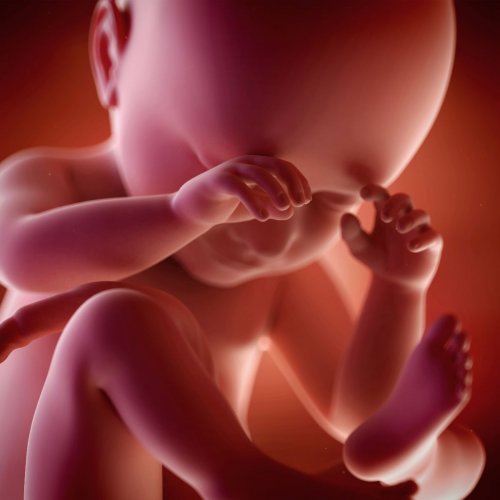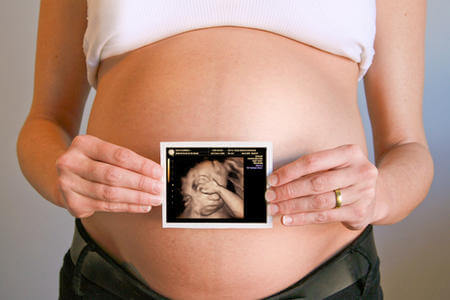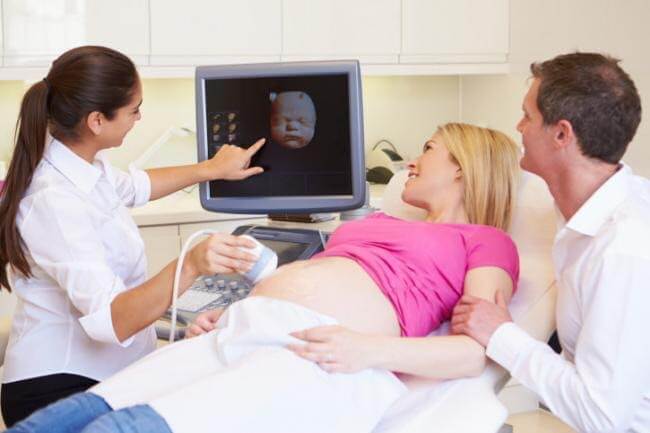Quickening: The First Movements Your Baby Makes

From the day we find out about our pregnancy, we always believe we feel the baby moving. However, experts state that it is only after the 13th week that quickening occurs. Quickening is defined as the first set of movements produced by the fetus in the womb.
They start off as gentle movements, almost like an imperceptible tingle. The confusion may arise when it comes time to differentiate the first movements from gases. However, mothers will soon tell the difference, as the fetus starts to move more and more with a certain pattern.
Babies usually move around all day, however in firstborns movements are a bit difficult to notice. In the second pregnancy it is easier to identify what is happening. There are first-time mothers who can start to feel the quickening as late as the 20th week.
Remember, all pregnancies are different and each woman can have their own perception of it. The timeframe in which the first movements are felt is usually between 13 and 25 weeks.
Why does quickening occur?

Fetal development doesn’t stop from the moment of conception. However, when we are talking about a little embryo there aren’t many obvious signs of life. This is why after they begin to develop with time, they begin to give us more signs of life.
Just like we wake up after a long lap, the fetus stretches and flexes their little extremities. We understand that the first movements are gentle because of the small size of the fetus.
As the pregnancy goes on, the movements become stronger. They begin to perform actions we interpret as kicks and punches. They are now bigger and hence can move around with more force.
As time passes, mothers can begin to interact with their babies in the womb. This is because they react to our movements. It may be that our position makes them uncomfortable; they will let us know by making movements. There are occasions when the food we eat can affect our baby causing them to move more.
Our emotions can also provoke these movements or lack there of. Some experts believe that when a baby is quiet and still in the womb, it is because they are afraid, maybe mom is moving around too much. On the contrary when they move a lot, it is usually when mom is relaxed and still.
Although there are various causes of quickening, the most basic reason is that it is a manifestation of the fetus’ life. It is completely normal and natural that they begin to move. In the case that they do not move, this can be a reason for worry. Yet we must remember all pregnancies are different.
After the quickening how much does the baby move?

As we previously stated, fetuses move around because of distinct causes. We begin to notice them move more frequently and with stronger intensity. After feeling their first movements, we start to notice all the others.
From the third trimester on, we can begin to identify a pattern. This pattern can only be noticed if we follow up on it. They move every day, perhaps at the same time or according to some particular stimulus such as food that the mom eats. Many mothers state that their babies become more active while they are at rest.
We can notice their movements daily and on a regular basis. However it is not completely static. That is to say, they move when they need to, sometimes their movements do not fall into the regular pattern. Similarly, from the third trimester on, changes occur because the baby grows larger and the uterus in comparison becomes a bit too small for them.
It is important to pay attention to their movements. We should become aware of when we feel them during the day. In the case that you begin to notice the movements reducing in frequency, you might have to consult your doctor.
It is ideal for a fetus to move around approximately 10 times in a two-hour period. Try to count their kicks and note down any changes.
From the 28th week on, following your baby’s movements is very important. This not only helps to detect possible problems but it is also a unique moment to remember forever. Quickening and your baby’s signs of life are a privilege for every mother. Take advantage to connect with them and enjoy this step consciously.